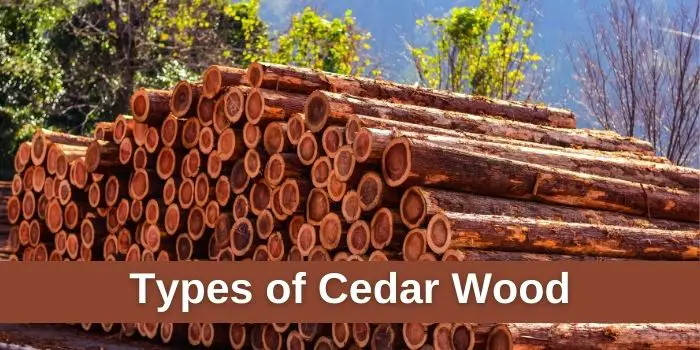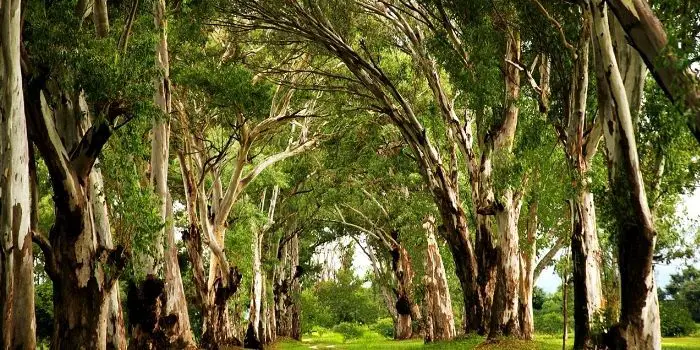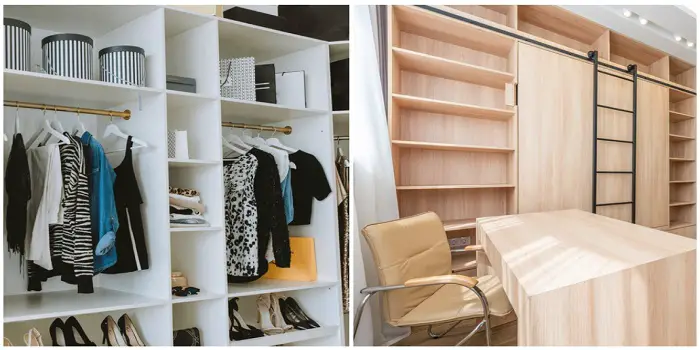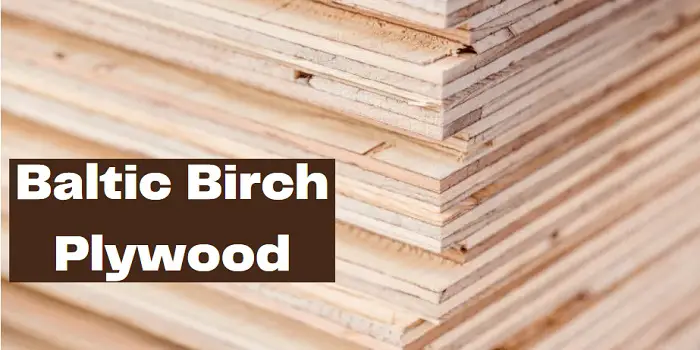
Cedarwood is a kind of wood that comes from various kinds of trees collectively known as cedars.
Cedar trees grow in different parts of the world for their varied purposes. Their needle-like leaves classify them as coniferous trees and are usually related to evergreen fern trees.
They are capable of growing as high as 100 feet, sometimes even higher. Their tell-tale brown cones require nearly a year in order to fully mature, and once they have, their split open and send their seeds out into the world around them.
Wood taken from cedar trees is famous for its aromatic properties, making it a common choice in lotions, creams, essential oils, and so on.
Cedarwood essential oil is thought to reduce feelings of fatigue while helping the user enjoy stress relief as well through aromatherapy. Some even use it to help ease headaches, improve sleep quality and alleviate sore joints.
This incredible family of trees has four major types and each has slightly different properties to set it apart.
Types of Cedar Wood
1. Western Red Cedar Wood
The wood taken from Western red cedar is commonly used for construction, especially for shingles, siding, decking, and various outdoor structures.
This kind of cedar is popular for outdoor use because of its water-repellent and decay-resistant properties.
As a part of the cypress family, this kind of tree grows as high as 200 feet and produces an impressive 10-foot-diameter trunk.
It has a low density and is remarkably lightweight, making it simple to cut into many shapes using either power tools or hand tools.
The sawdust of this type of wood is known to cause rashes and issues with breathing, so it’s a good idea to wear proper protection before working with this wood or instead enlist the help of a professional.
Western red cedar has a beautiful reddish-brown hue that is dashed with bits of pink.
While it has thin white sapwood, this part is taken off during the processing of its lumber, though it does keep its natural knots in this process.
2. Northern White Cedar Wood
Often referred to as the arborvitae, this kind of cedar can be found most commonly in the Northeastern areas of the United States and Southeastern Canada.
This kind of cedar produces logs that are usually even lighter than red cedar, which makes it particularly easy to work with it.
This light weight does have some drawbacks, one of them being that the wood is a bit fragile and might snap even without using sharp power tools. Much like Western red cedar, it can cause respiratory issues or rashes when worked with.
The Northern white cedar can be identified by its creamy white line of sapwood that sits around the light brown interior complete with knots.
Northwestern white cedar wood is decay resistant and doesn’t often struggle with pests, so it’s a good choice for boats, outdoor posts, shingles, and decking.
3. Eastern Red Cedar Wood
A member of the cypress family, this species of cedar reaches heights of up to 40 meters with some towering as high as 100 meters.
It can be found primarily in the eastern United States and is loved for its strong aromatic woody scent. It also generates natural oils that are commonly used as a lining for drawers and closets to repel insects.
Eastern red cedar is simple to work with using power and hand tools alike since the wood is a nice midweight.
When working with it, you should use gloves and a respirator to avoid respiratory issues and rashes.
This wood is commonly used in the stationery industry thanks to its beautiful appearance.
The heartwood features reddish-pink tones complete with reddish-brown streaks and sometimes dashes of purple. The sapwood of the tree is almost entirely white and shows off knots throughout the lumber.
Aromatic cedar wood works well in open areas. In cramped, confined places, there may be issues with the finishing.
For this reason, it isn’t recommended to use Eastern red cedar wood for making drawers, closets, or furniture in a tight space. Be sure to finish it with lacquer and polyurethane for best results.
4. Alaska Cedar Wood
Also called yellow cedar, this kind of cedar is common from Alaska to British Columbia, making it quite abundant in the Pacific Northwest.
The wood that is obtained from Alaska cedar wood is ultra-dense and hard, making it different from many other kinds of cedar wood.
It boasts a distinct yellow color complete with tight rings that show how slow it grows.
Though this kind of cedar is primarily yellow, you may also notice a creamy white hue complete with dark streaks. The wood machines in lumber processing help stain the wood to give it a beautiful shine.
Many American builders have a preference for yellow cedar wood when making railings, durable decks, canoe paddles, and paneling.
It is also popular with makers of musical instruments since the wood has a great sound quality.
5. Spanish Cedar Wood
This is a type of cedar native to South America and Central America.
It is lightweight and a common option for builders and woodcutters to use in any manner of applications from building cabinets and cupboards to windows and furniture.
While it can be difficult to find in the United States and Europe, it is still a popular wood that is often imported especially for making cigar humidors, due to its moisture and pest resistance as well as its pleasant scent.
This kind of cedar is composed of a straight-line grain that is effortless to cut. The wood has a reddish-brown and pink color that darkens over time. Beyond its beauty, it is durable and long lasting.

Different Types of Cedar Trees
1. Deodar Cedar
This is a coniferous tree that is known for its “weeping.”
Another name that the deodar cedar is known by is Himalayan cedar, and its name “deodar” comes from the word “devadaru,” which means “timber of the gods” in Sanskrit.
It is a highly favored type of tree and is used in large gardens and parks to enhance the appearance of the area.
This species is the national tree in Pakistan, and the Royal Horticultural Society has even awarded it the Award of Garden Merit.
This kind of tree can be identified using its distinct appearance. It features long conifer needles that sprout in either a grayish-green or bluish-green hue.
It is a non-flowering tree that needs full exposure to the sun as well as sandy, moist soil to help it grow as high as 40 to 50 feet tall with a maximum width of 30 feet.
2. Atlas Cedar Tree
The Atlas Cedar Tree is a towering conifer that can grow as tall as 60 feet with a trunk diameter of six feet. It is native to the Moroccan mountains and grows quite slowly.
What makes it stand out from other cedars is its pyramid shape and beautiful silver-blue needles that can grow up to an inch in length.
To flourish, this tree requires partial shade or full sun and likes well-drained but moist soil.
It can withstand both heavy wind and long droughts but can be damaged by sapsuckers, borers and weevils, meaning pesticides have to be used to protect it.
The Atlas Cedar Tree also needs to be fertilized using compounds that encourage sturdy, strong growth.
When it is young, it needs to be trimmed to stop it from shedding in heavy snow. Keep in mind that these trees also grow the best in large areas.
3. Cyprian Cedar Tree
The Cyprian Cedar Tree is considered the rarest cedar type and is found in Turkey, Syria, and Cyprus.
Sometimes called yellow cedar, this kind of cedar is well-loved for its umbrella-shaped crown and small leaves.
They are usually compared to the Cedar of Lebanon because of a few similar aspects.
Even so, their physical appearance is very different from each other, with the Cedar of Lebanon having a pyramid crown and longer leaves.
4. Cedar of Lebanon
Finally, the Cedar of Lebanon is the national tree of the country for which it is named.
Though it grows natively in the Eastern Mediterranean basin, this cedar is grown in various other locations around the world and is most commonly cultivated in Turkey and Syria.
These trees feature pyramid-shaped crowns and long, straight leaves, their trunks sometimes growing as high as 40 meters.
The Cedar of Lebanon is popular due to its historic and biblical importance, especially in ancient Lebanon where it was exported to Egypt to build boats while King Sneferu was in power.
It is commonly quoted in various scriptures in the bible and is one of the woods used for building structures in Israel’s Iron Age.
Alongside this, it is also thought that it was used by King David to construct his palace and again by Solomon who constructed both of his temples out of it.
Share the post "5 Different Types of Cedar Wood (And 4 Kinds of Trees)"

Hi, I am Mark Garner a professional carpenter, woodworker, and DIY painter. I live in the small city of Peoria, Arizona as a semi-retired woodworker. I have started this blog with a simple motive to help you with my wood experience in this sector. If you like to know more about what I love doing and how it all got started, you can check more about me here.




